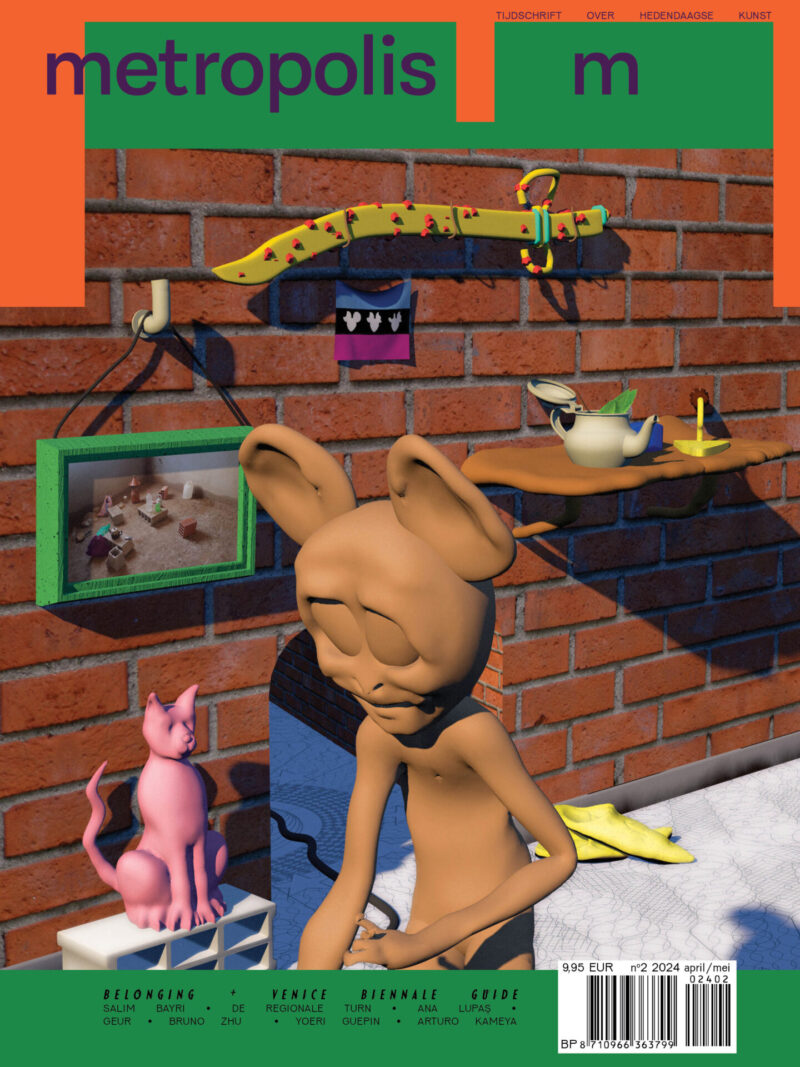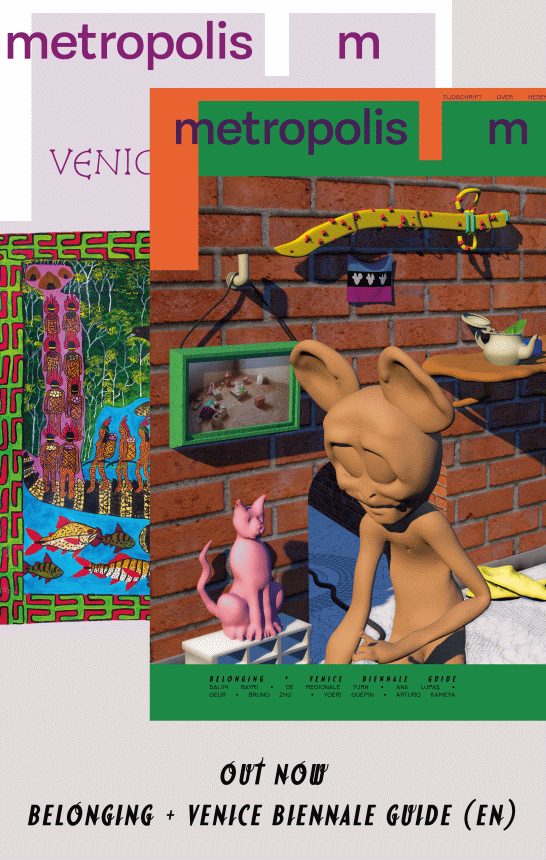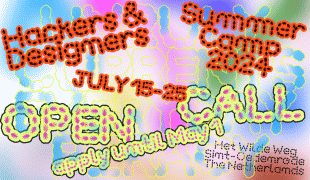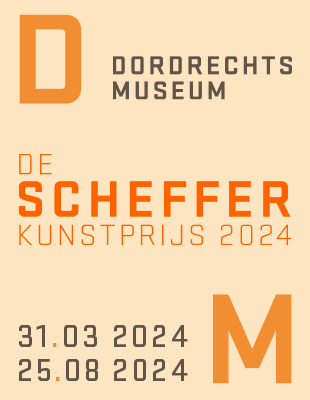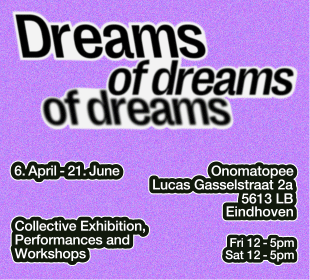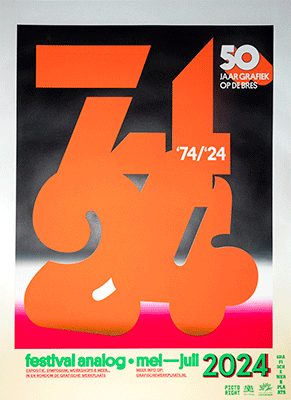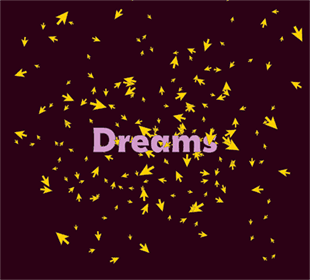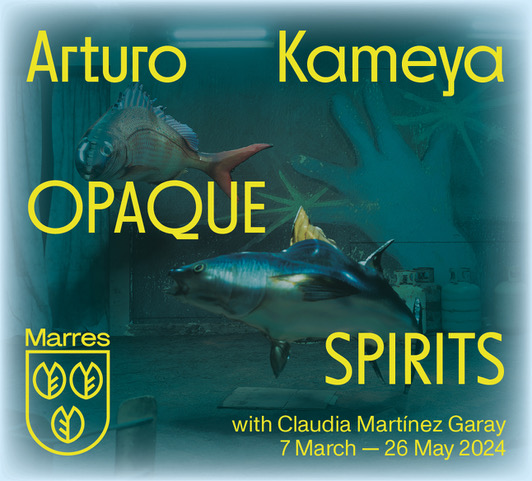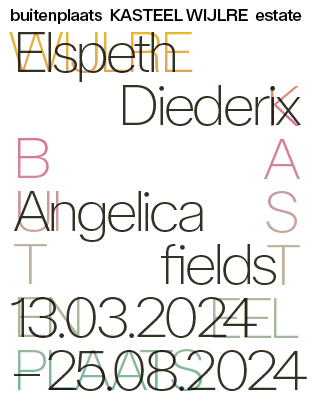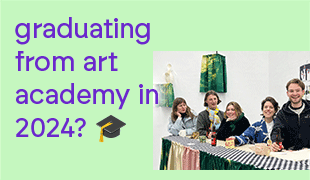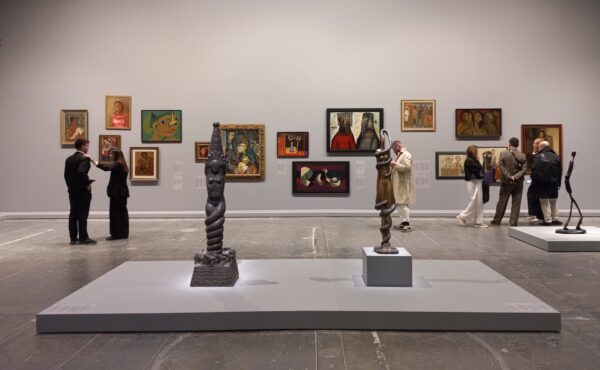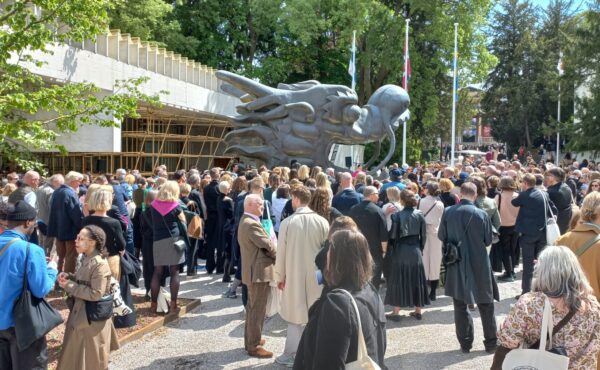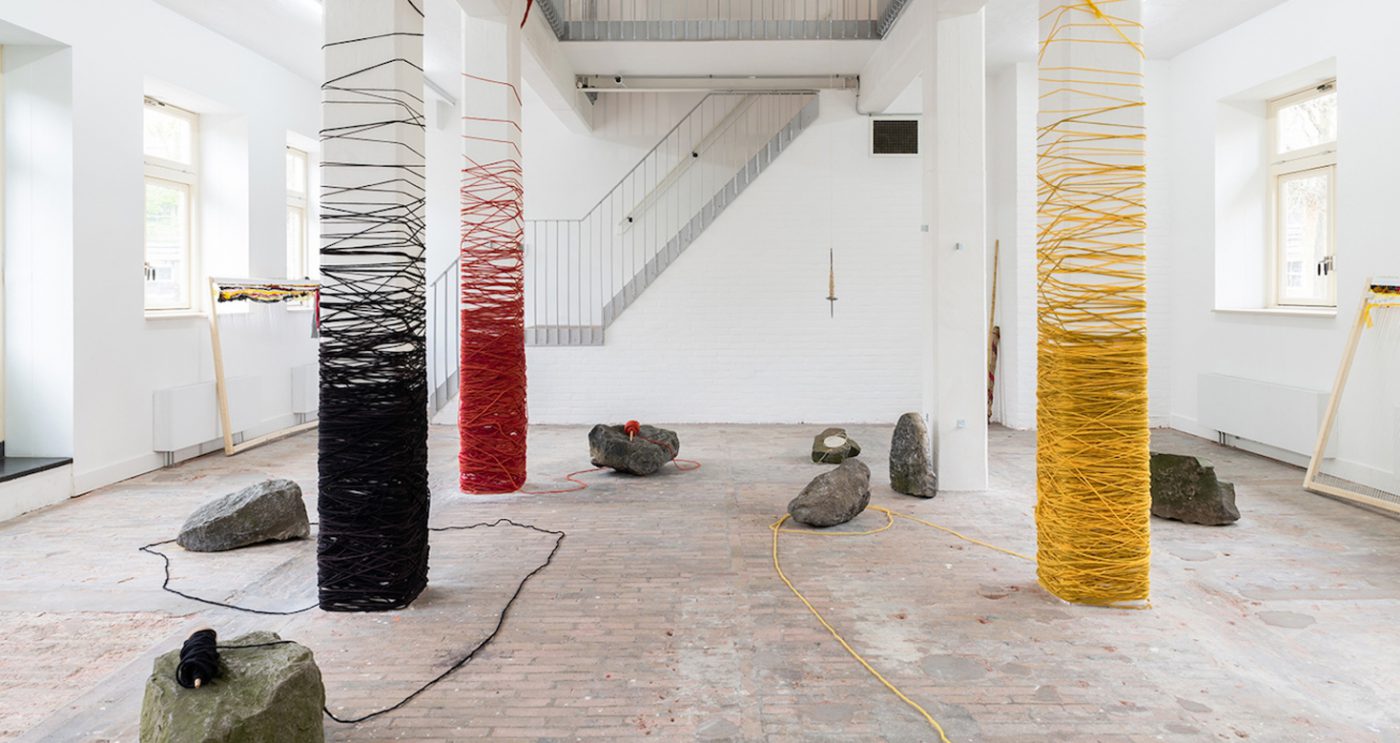
Aldo E. Ramos, ‘Spinning the Spindle Towards Pluritopia’, at A Tale of A Tub, photo: LNDW Studio
Spiralling towards a pluriversal world – Aldo E. Ramos at A Tale of a Tub
How can we think of ourselves in relation to the earth while cherishing the different grounds everyone originates from? This is the leading thought within Aldo E. Ramos’ artistic practice. During the preparations for his exhibition at A Tale of a Tub, Ramos contacted people living in the neighbourhoods surrounding the exhibition place, sharing stories with them about migration, loss, and growing roots in unexpected places.
Running up to his exhibition Spinning the Spindle Towards Pluritopia, Ramos set up a tent in the space and camped out there for a bit. He wanted to get to know the history of the place, its environment, and the stories of the people and communities it is surrounded by. When he found out that A Tale of a Tub was originally built as a communal water facility, in which people came together while washing, he felt the urge to revive this function by inviting the surrounding communities. Trying to gather people with an open call, Ramos quickly realised that this tool, useful as it is to connect with people in the arts, did not work to get in touch with locals. Instead, he went to the community garden Natuurlijk Spangen, the meeting centre Buuf & Co and got in contact with the Herstelakademie in the Westervolkhuis. He spent time there, sharing his story and getting to know other people’s stories. For the exhibition, Ramos drew from these experiences with the communities in Spangen, as well as from his recent visits to Columbia.
Entering Ramos’ exhibition Spinning the Spindle Towards Pluritopia, the visitor is handed a flashlight to navigate through the exhibition space’s dark basement, where video works are on view. Among those works, residues of workshops that have taken place during his residency at A Tale of a Tub are “installed” as well; you find traces of these gatherings in the shape of sculptures or drawings. The preliminary workshops, given by Ramos himself as well as by Andrea Koll and Lisanne Janssen, are to be seen as ways of transforming the exhibition space into a space for encounters.
[blockquote]When Ramos found out that A Tale of a Tub was originally built as a communal water facility, in which people came together while washing, he felt the urge to revive this function by inviting the surrounding communities
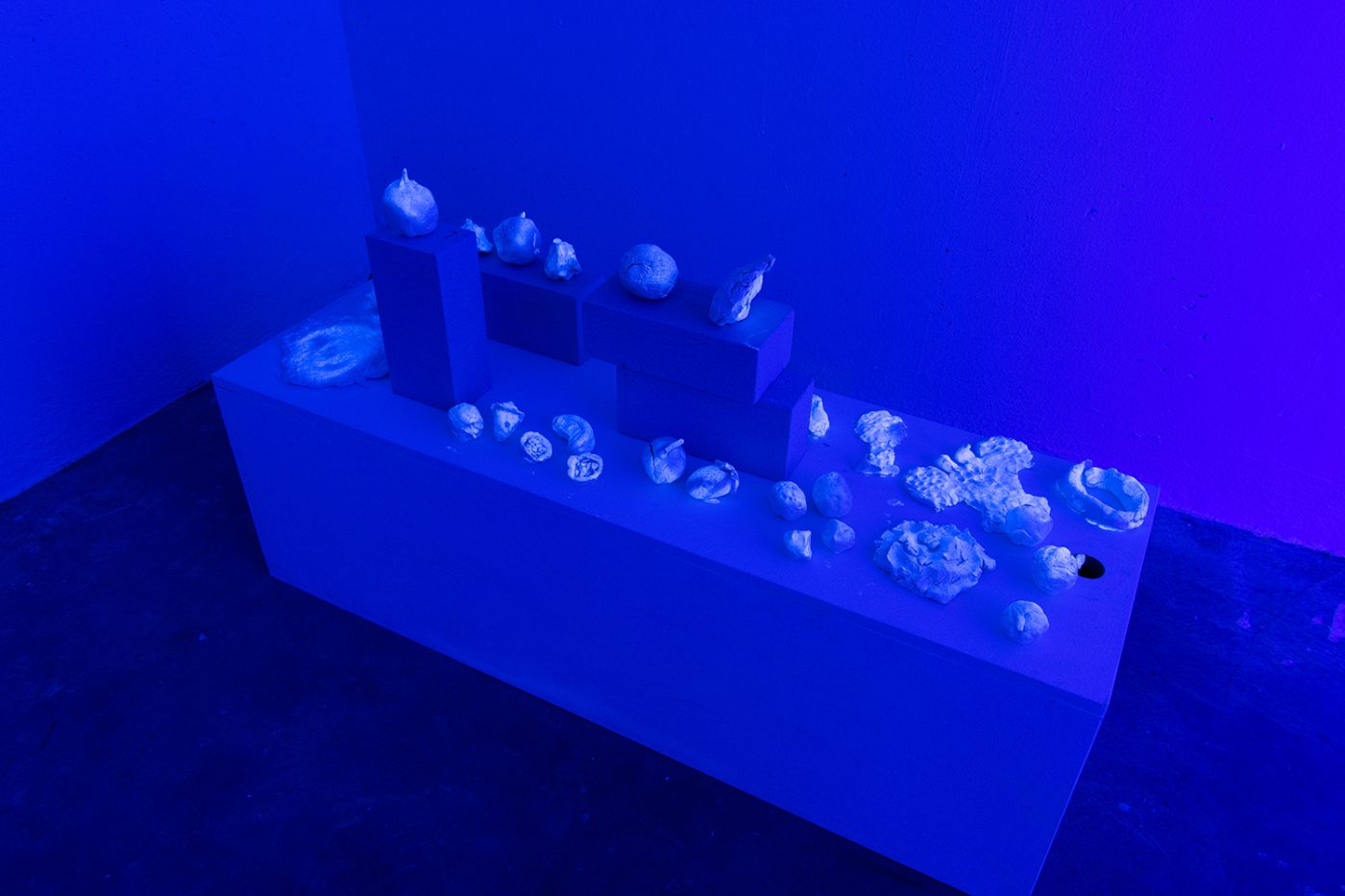
Aldo E. Ramos, 'Spinning the Spindle Towards Pluritopia', at A Tale of A Tub, photo: LNDW Studio
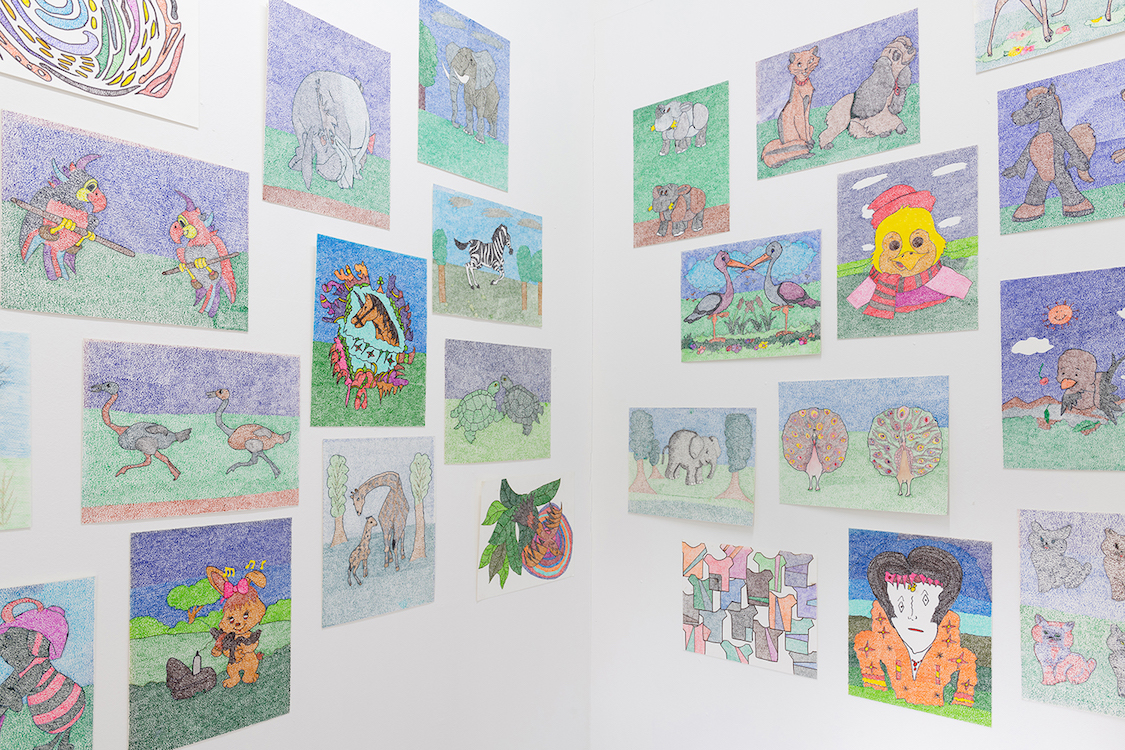
Aldo E. Ramos, 'Spinning the Spindle Towards Pluritopia', at A Tale of A Tub, photo: LNDW Studio
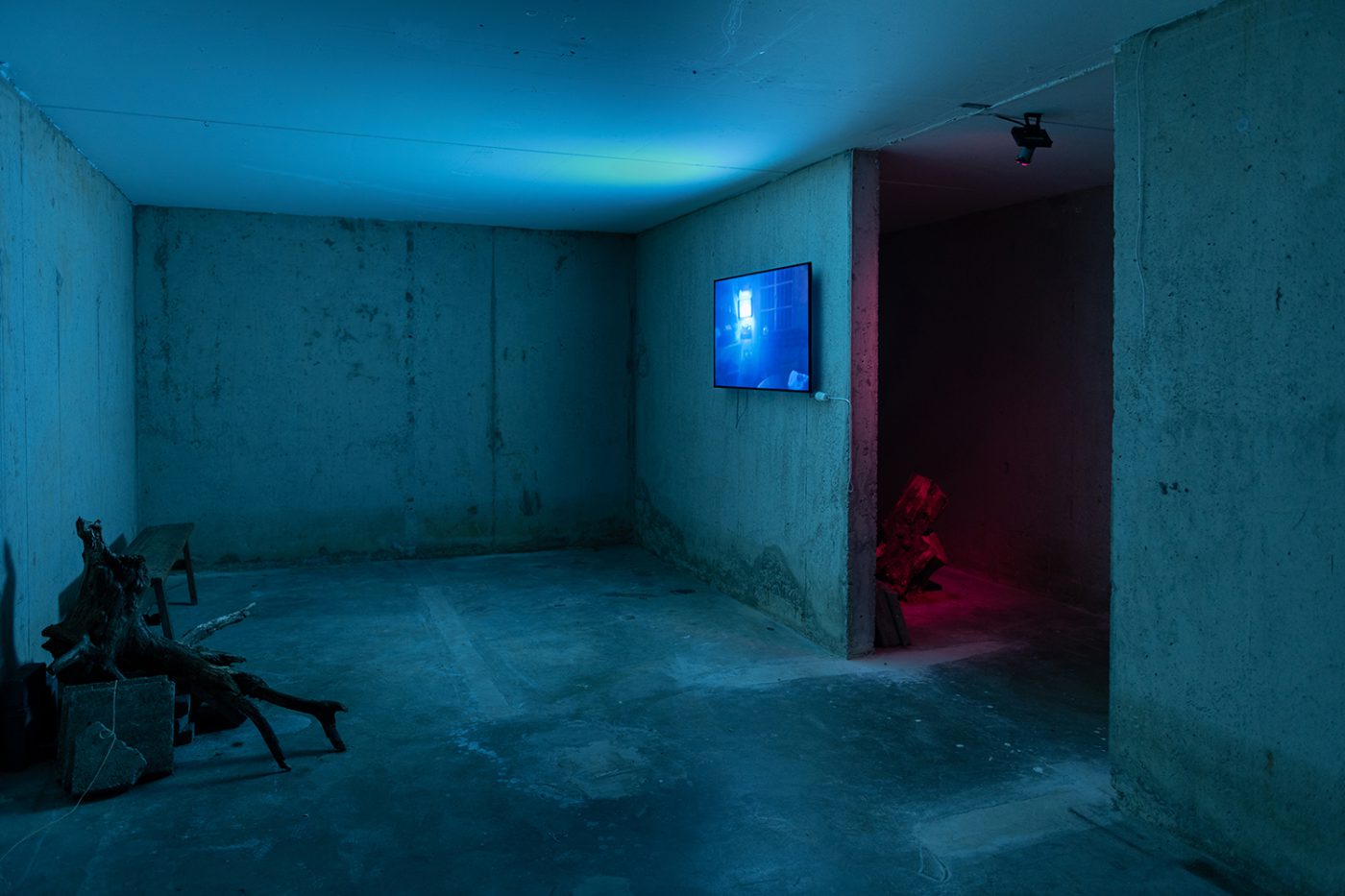
Aldo E. Ramos, 'Spinning the Spindle Towards Pluritopia', at A Tale of A Tub, photo: LNDW Studio
This makes the encounter space Ramos created on the ground floor, called Spinning the spindle, Interweaving the roots of a Pluriversal world, the exhibition’s highlight. The four pillars that stand in the middle of the space are each assigned their own colour: red, black, yellow and white wool yarn is woven around them. The remaining yarn is rolled on wooden spindles lying next to the pillars, or, in the case of the “white” pillar, used to make a kind of cloud that spirals into a thread, the spindle hanging at about chest height in-between the pillars. Stones are placed on the floor and big wooden weaving frames are leaning on the sidewalls. It is here, in-between the pillars, where the performance Knowledge as Seed, Seed as Memory takes place. Together with the other visitors I sit in a circle around the space in-between the pillars, listening to the stories the performers share.
The performance is based on a Mayan ritual, the Hetzmeek ritual of the cycle of life, death and rebirth. It welcomes new members to the community and invites to learn from ancestral knowledge. Ramos performs this ritual together with Yuchen Li, his colleague from the artist collective Weaving Realities, and Valiana Aguilar, a guest from the Suumil Móokt’aan collective, a small Mayan community in Sinanche, Mexico. Guest speaker Wiedjai Dihal from the Spangen community is guiding the ritual. The audience exists of a mix of A Tale of a Tub employees, regular visitors and locals who, until Ramos reached out to them, had never had been in this art-space.
The performance is based on a Mayan ritual which welcomes new members to the community and invites to learn from ancestral knowledge
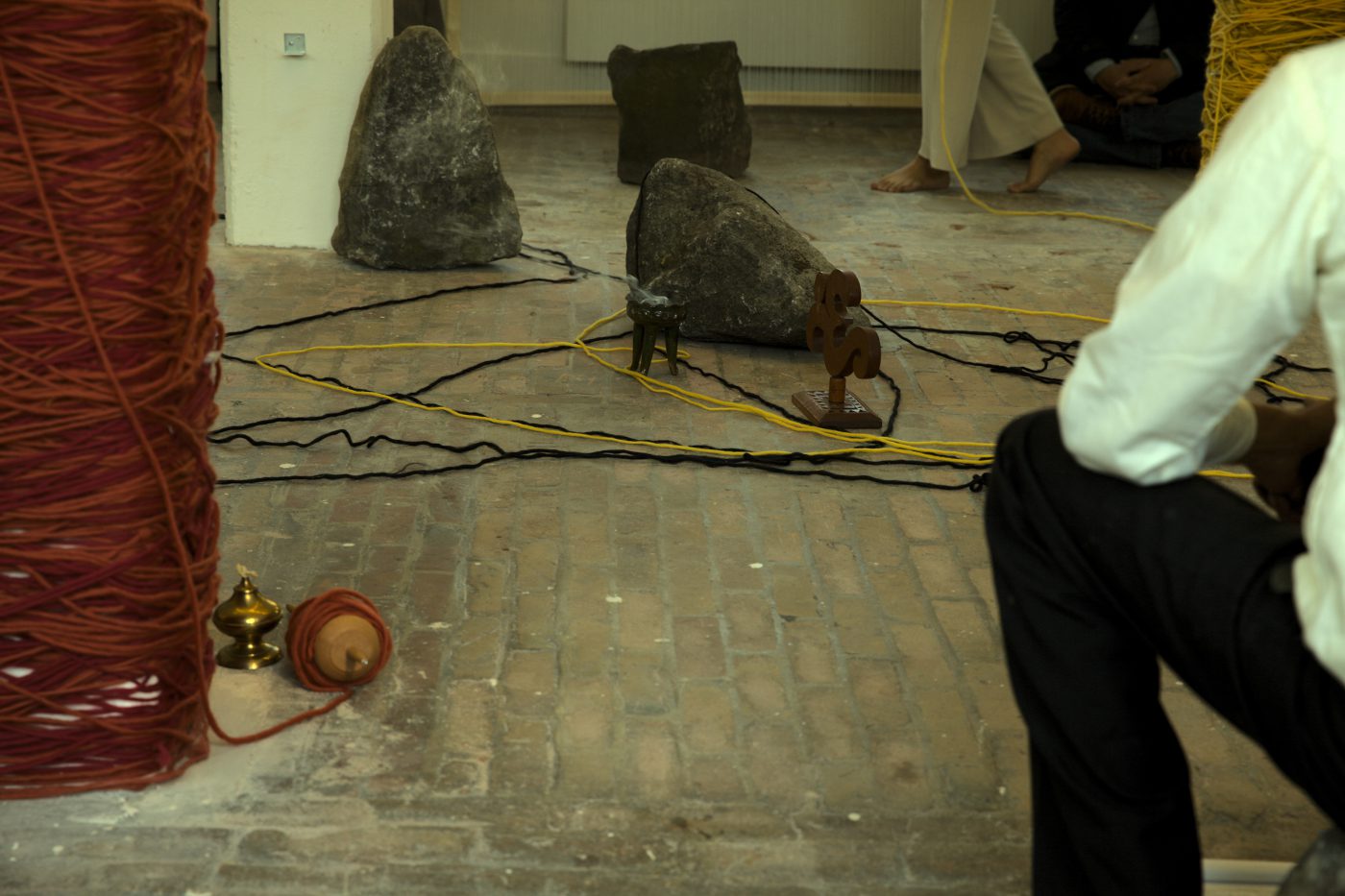
Aldo E. Ramos, 'Spinning the Spindle Towards Pluritopia', performance at A Tale of A Tub, icw Yuchen Li, Valiana Aguilar and Wiedjai Dihal. Photo: Nele Brökelmann
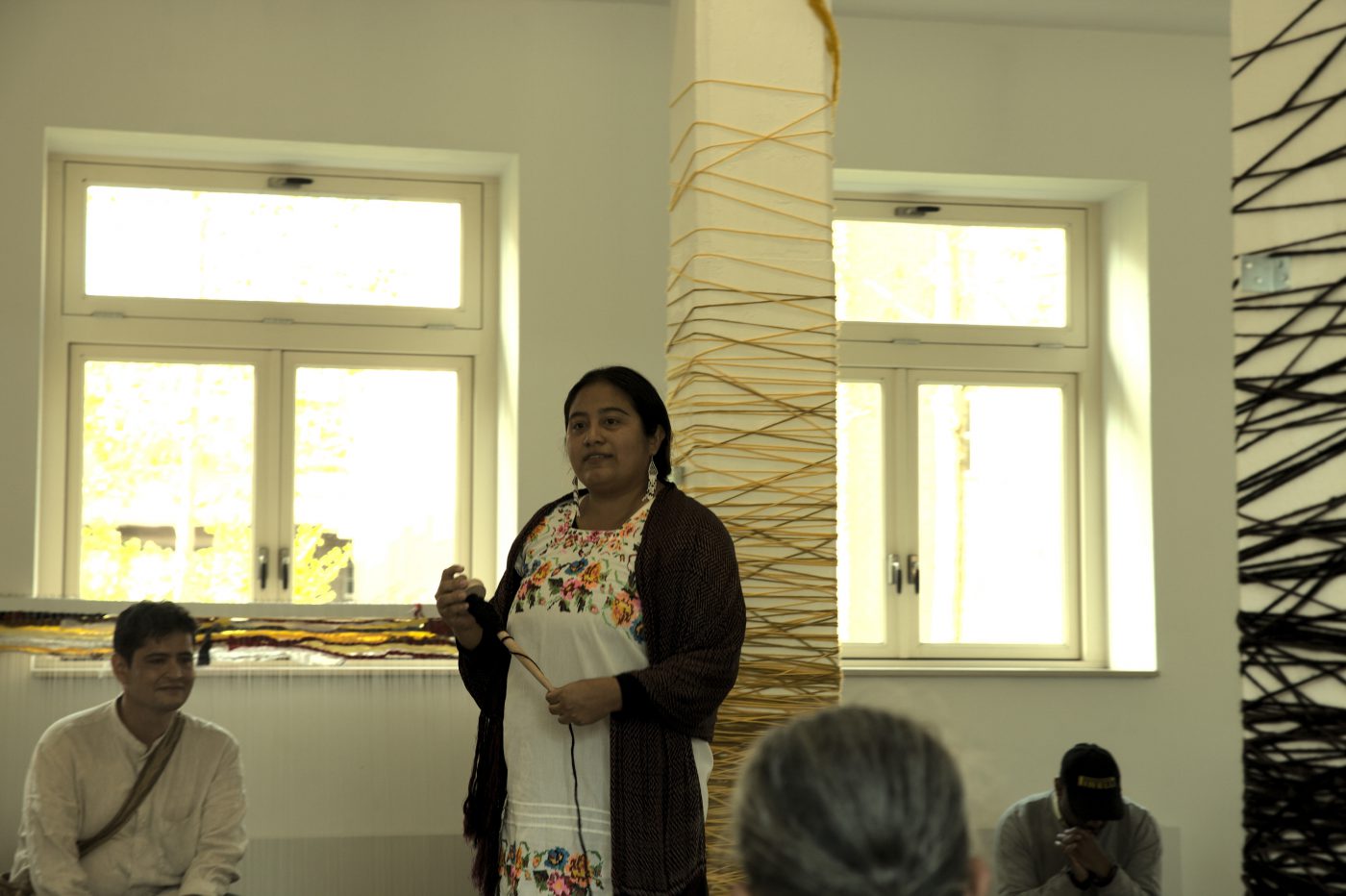
Aldo E. Ramos, 'Spinning the Spindle Towards Pluritopia', performance at A Tale of A Tub, icw Yuchen Li, Valiana Aguilar and Wiedjai Dihal. Photo: Nele Brökelmann
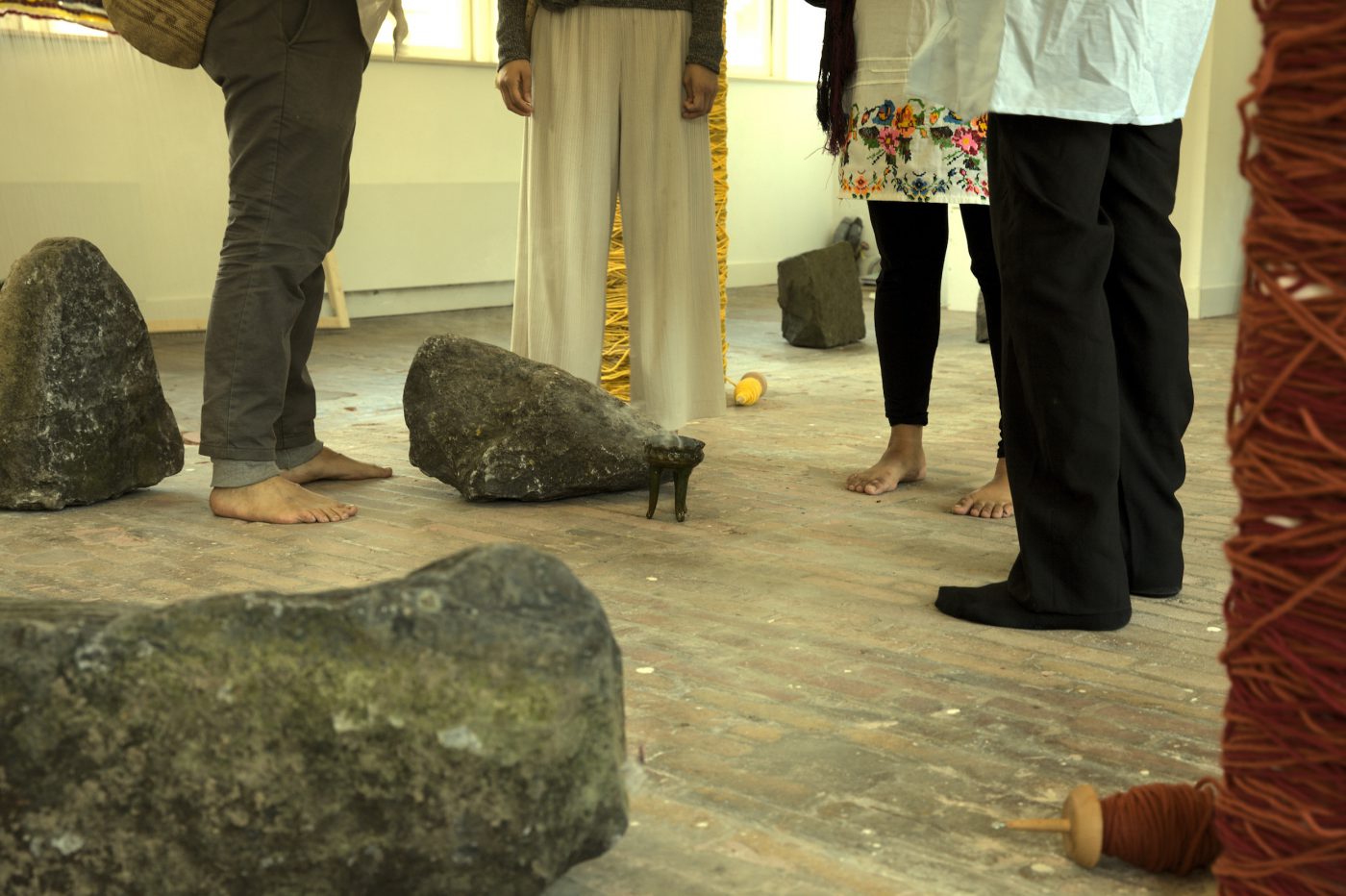
Aldo E. Ramos, 'Spinning the Spindle Towards Pluritopia', performance at A Tale of A Tub, icw Yuchen Li, Valiana Aguilar and Wiedjai Dihal. Photo: Nele Brökelmann
Before addressing the audience, the four performers move together through the space, burning incense in a small golden holder and finally coming together in a circle. Then Ramos is inviting everyone to sit around the sides of the space and introduces his fellow performers. Dihal initiates the first round with an introduction and hands the black spindle to Aguilar, the first speaker. While walking around the space she unrolls the yarn on the spindle and speaks about her longing for a sense of time that connects her to the beings on and the earth itself. When she is finished, she hands the spindle to Ramos who continues the movement while talking about his time in the Sierra Nevada in Columbia. In the desert, he experienced another sense of time; he felt guided by the time of the earth and the moon. When Li is handed the spindle, she once again continues the movement, describing her grandfather’s way of always speaking in the present.
The different spindles stand for different things. The red spindle, for example, speaks of light and how beings gather around it. Fire nourishes and heals, but can also bring death. It makes room for transitions; is an end and a beginning at the same time. The yellow spindle triggers memories of water. The stories shared recall the destruction of forests, and how water pollution sickens bees and people. Ramos describes the activity of thinking as water; it always originates from somewhere. As water starts its circular path from the springs in the mountains, plants can sprout from the smallest cracks in unexpected places. Consequently the question is posed how we can root ourselves in this wide interconnectedness and thus think with the water, the river and the earth? In his lecture that follows up on the performance, Dihal proposes that awareness of the knowledges already existing around us, could be a start. Dihal starts off his lecture showing a small sculpture which portrays Hindu God Shiva dancing on top of someone else; the “Cosmic Dancer”, Dihal explains, exhibits the same spiritual ignorance that many of today’s most pressing problems stem from.
As the spindles are rolled out one by one and passed on to the next speaker, the threads cross each other and form new connections
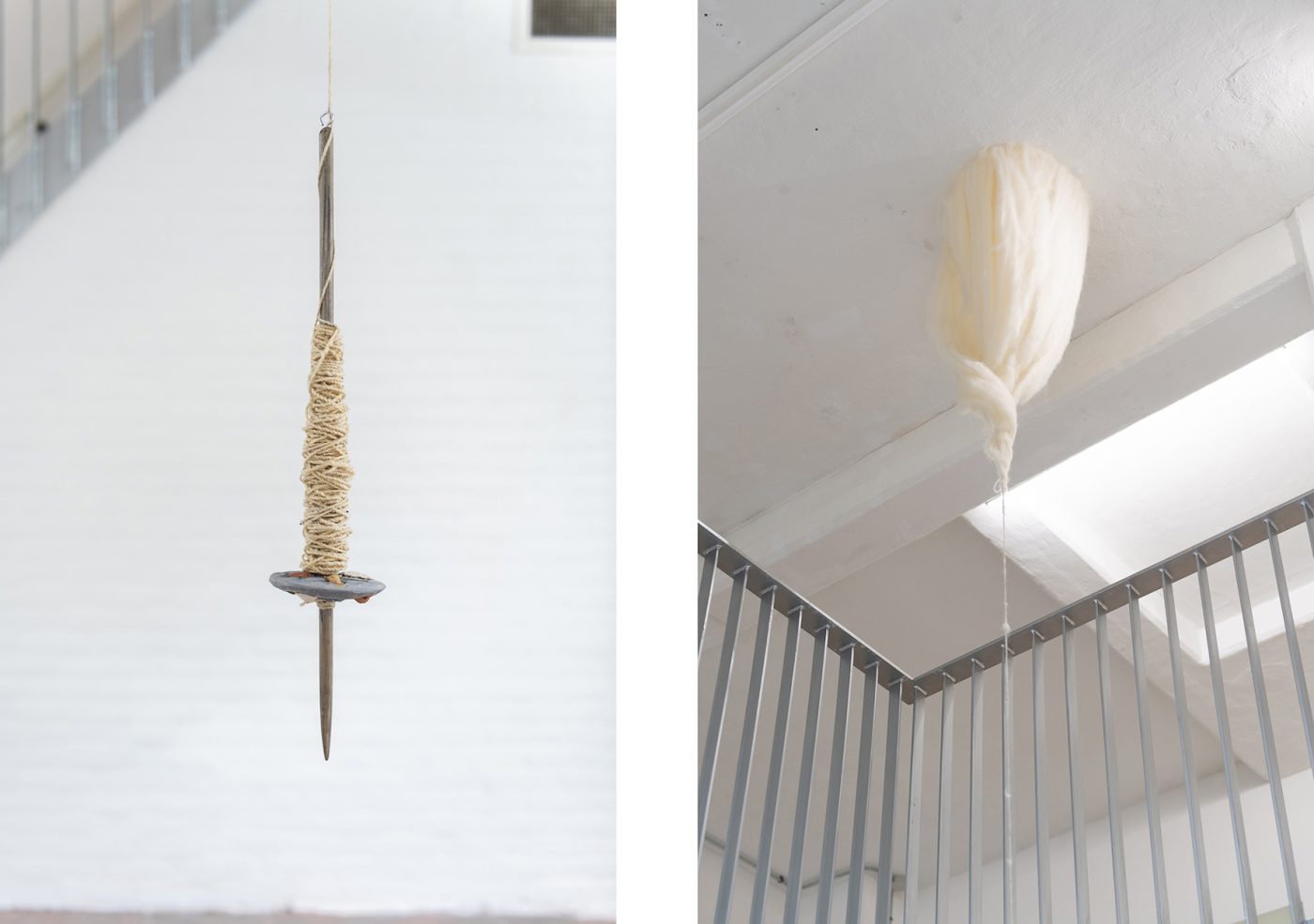
Aldo E. Ramos, 'Spinning the Spindle Towards Pluritopia', at A Tale of A Tub, photo: LNDW Studio
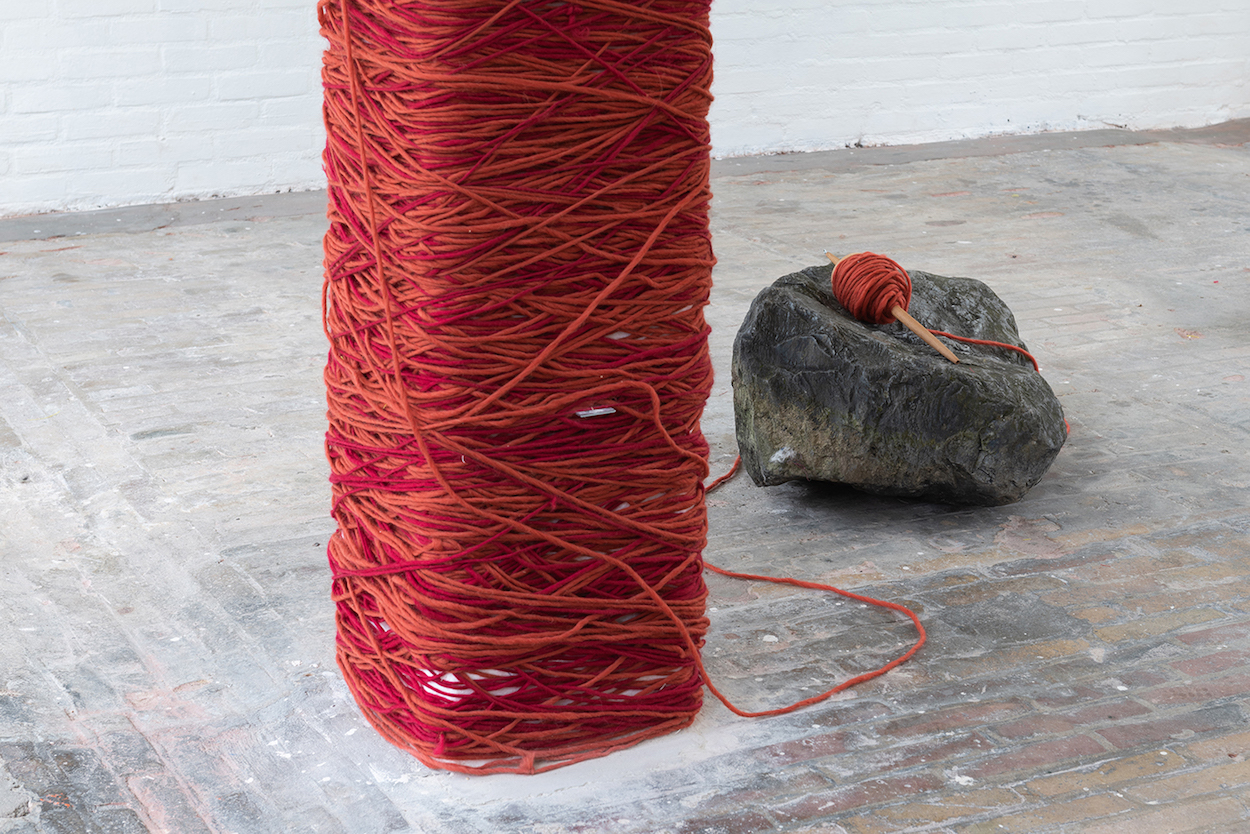
Aldo E. Ramos, 'Spinning the Spindle Towards Pluritopia', at A Tale of A Tub, photo: LNDW Studio
As the spindles are rolled out one by one and passed on to the next speaker, the threads cross each other and form new connections. Rituals such as the one performed here are powerful because they allows us to see that we are simply one of many on a spiralling path thankfully crossing each other in this pluriversal world.Watching and listening how these stories unfold, I become aware of all the little threads of recognition that connect us. I admire that Ramos reaches out to and gives room to such communal knowledges residing in the direct environment of A Tale of a Tub. This is one way in which wisdom can sprout from the cracks in our societies and communities can form. By opening up the exhibition space as an encounter space Ramos really is spinning new threads.
Aldo E. Ramos’ exhibition Spinning the Spindle Towards Pluritopia is on view until the 26th of June, 2022. The 28th of May there is an Open Jam session with The Water Facility
Nele Brökelmann
is beeldend kunstenaar